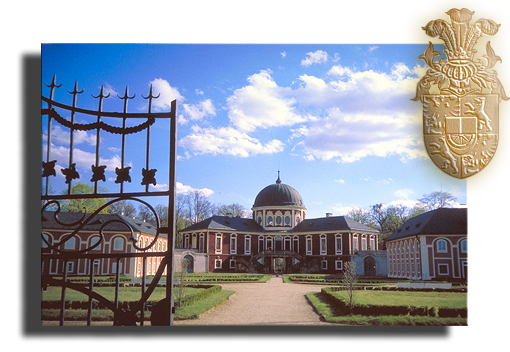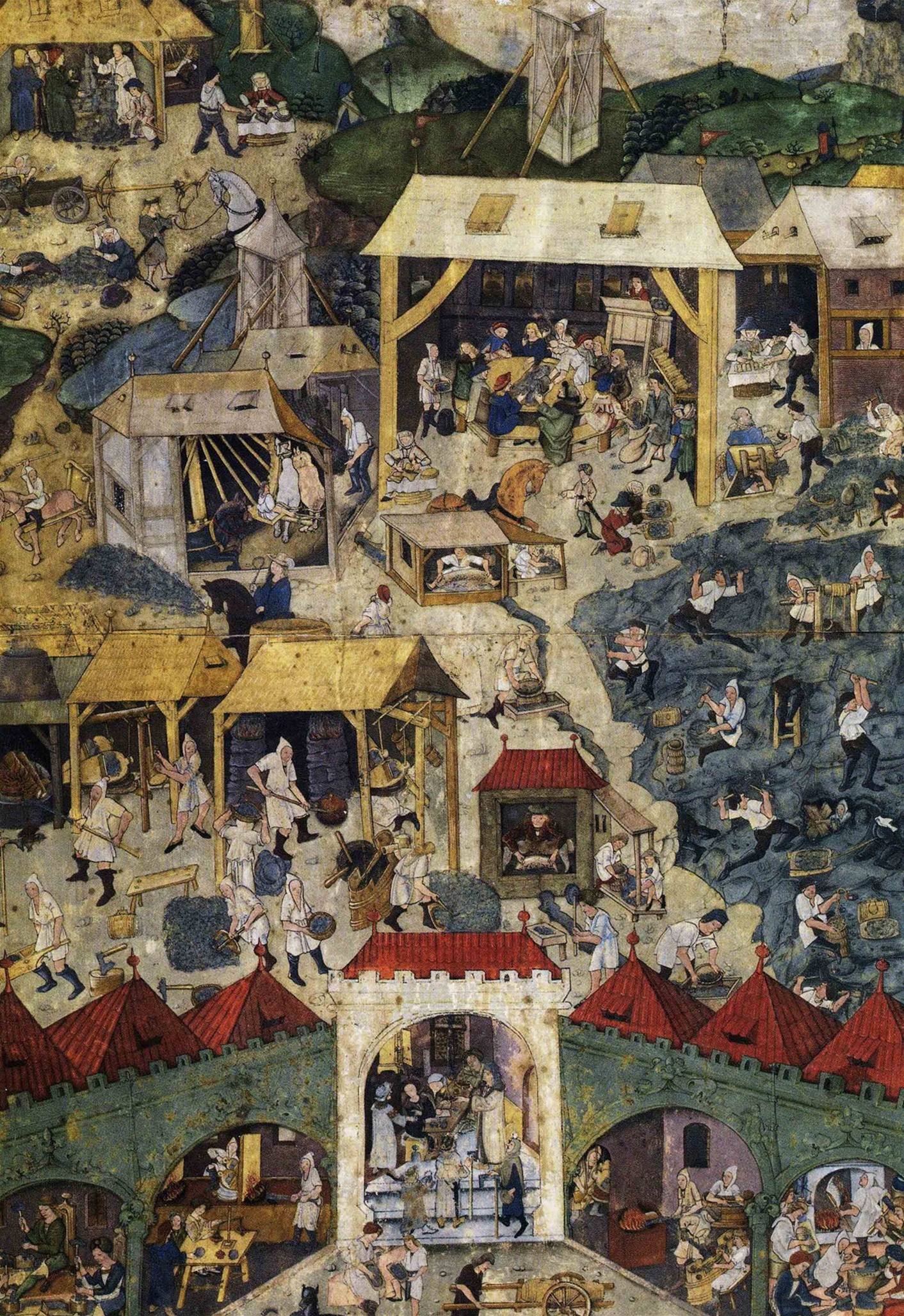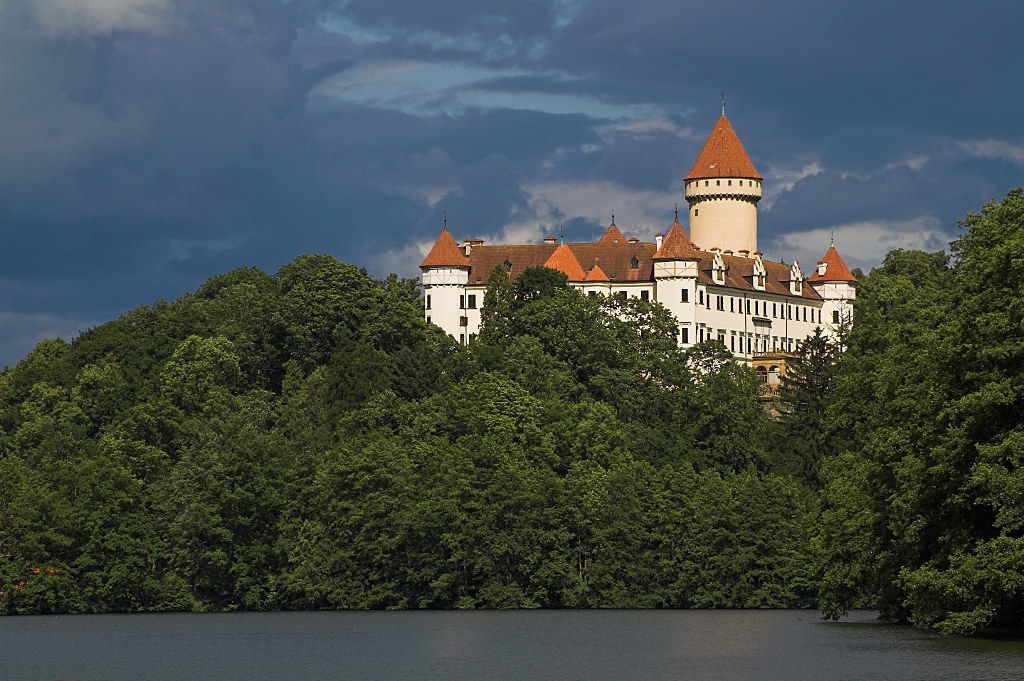|
František Maxmilián Kaňka
František Maxmilián Kaňka (9 August 1674 in Prague – 14 July 1766 in Prague) was a Czech architect and builder. He was known for modifying castles, palaces and churches. In 1724 he was appointed emperor's architect. Work He is most famous for reconstructions of palaces and castles of Bohemian noblemen and for designs of churches and other religious buildings, principally in Baroque style. His work includes: * reconstruction of Vrtba palace and Vrtba Garden, Prague * reconstruction of the Krásný Dvůr Castle, c. 1720 * with Anselmo Lurago, the Astronomical Tower and other structures at the Clementinum, Prague, c. 1720 * reconstruction of facade of the St. Procopius Basilica in Třebíč (a UNESCO World Heritage Site) * the chateau Konopiště outside of the town of Benešov, last residence of Archduke Franz Ferdinand of Austria and now a museum * Church of St. John of Nepomuk, Kutná Hora * Veltrusy Mansion residence of count Václav Antonín Chotek of Chotkov and V ... [...More Info...] [...Related Items...] OR: [Wikipedia] [Google] [Baidu] |
Clementinum Astronomical Tower
The Clementinum (''Klementinum'' in Czech language, Czech) is a historic complex of buildings in Prague. Until recently the complex hosted the National, University and Technical libraries; the City Library was also nearby on Mariánské Náměstí. In 2009, the Technical library and the Municipal library moved to the Prague National Technical Library at Technická 6. It is in use as the National Library of the Czech Republic. In 2005, the Czech National Library received the UNESCO Jikji prize (Memory of the World). History Its history dates from the existence of a chapel dedicated to Saint Clement in the 11th century. A Dominican monastery was founded in the Middle Ages, medieval period, which was transformed in 1556 to a Jesuit college. In 1622 the Jesuits transferred the library of Charles University to the Klementinum, and the college was merged with the University in 1654. The Jesuits remained until their suppression of the Society of Jesus, suppression in 1773, when the Kl ... [...More Info...] [...Related Items...] OR: [Wikipedia] [Google] [Baidu] |
Benešov
Benešov (; german: Beneschau; also known as Benešov u Prahy) is a town in the Central Bohemian Region of the Czech Republic. It has about 16,000 inhabitants. The town is known for the Konopiště Castle. Administrative parts Villages of Baba, Bedrč, Boušice, Buková Lhota, Červený Dvůr, Chvojen, Dlouhé Pole, Konopiště, Mariánovice, Okrouhlice, Pomněnice, Radíkovice, Úročnice and Vidlákova Lhota are administrative parts of Benešov. Geography Benešov lies about southeast of Prague. The town is located in the Benešov Uplands on the Benešovský Stream. In the western part of the territory are situated the ponds Konopišťský and Jarkovický. History The area of Benešov began to be settled in the 11th century. The first settlers are believed to have arrived on Karlov Hill in around 1050 during the Přemyslid dynasty. The first written verified mention of Benešov is from 1219–1222, however there are unverified mentions from 1048 and 1070. Benešov was seat ... [...More Info...] [...Related Items...] OR: [Wikipedia] [Google] [Baidu] |
1766 Deaths
Events January–March * January 1 – Charles Edward Stuart ("Bonnie Prince Charlie") becomes the new Stuart claimant to the throne of Great Britain, as King Charles III, and figurehead for Jacobitism. * January 14 – Christian VII becomes King of Denmark. * January 20 – Outside of the walls of the Thailand capital of Ayutthaya, tens of thousands of invaders from Burma (under the command of General Ne Myo Thihapate and General Maha Nawatra) are confronted by Thai defenders led by General Phya Taksin. The defenders are overwhelmed and the survivors take refuge inside Ayutthaya. The siege continues for 15 months before the Burmese attackers collapse the walls by digging tunnels and setting fire to debris. The city falls on April 9, 1767, and King Ekkathat is killed. * February 5 – An observer in Wilmington, North Carolina reports to the Edinburgh newspaper ''Caledonian Mercury'' that three ships have been seized by British men-of-war, on the char ... [...More Info...] [...Related Items...] OR: [Wikipedia] [Google] [Baidu] |
1674 Births
Events January–March * January 2 – The French West India Company is dissolved after less than 10 years. * January 7 – In the Chinese Empire, General Wu Sangui leads troops into the Giuzhou province, and soon takes control of the entire territory without a loss. * January 15 – The Earl of Arlington, a member of the English House of Commons, is impeached on charges of popery, but the Commons rejects the motion to remove him from office, 127 votes for and 166 against. * January 19 – The tragic opera '' Alceste'', by Jean-Baptiste Lully, is performed for the first time, presented by the Paris Opera company at the Theatre du Palais-Royal in Paris. * February 19 – England and the Netherlands sign the Treaty of Westminster, ending the Third Anglo-Dutch War. Its provisions come into effect gradually (''see'' November 10). * March 14 – Third Anglo-Dutch War: Battle of Ronas Voe – The English Royal Navy captures the Dutch East Ind ... [...More Info...] [...Related Items...] OR: [Wikipedia] [Google] [Baidu] |
Karolinum
Karolinum (formerly Latin: ''Collegium Carolinum'', in Czech ''Karlova kolej'') is a complex of buildings located in the Old Town of the City of Prague. Karolinum, the seat of the Charles University, is one of the oldest dormitories situated in Central Europe. The dormitory was named after the Emperor Charles IV. History Shortly after the establishment of Charles University in 1348, the young institution encountered several organizational problems. One of the major complications was the lack of lecture and accommodation rooms for teachers and students. Emperor Charles IV, apparently inspired by the organization of the Sorbonne college in Paris and by the newly founded universities in Kraków (1364) and Vienna (1365), decided to donate to the school a new college. In 1366, the university received the house of the Jew Lazar, located in the Prague's Old Town. However, the school was donated really representative rooms only in the early 1380s by Wenceslaus, the son of Charles IV. F ... [...More Info...] [...Related Items...] OR: [Wikipedia] [Google] [Baidu] |
Václav Antonín Chotek Of Chotkov And Vojnín
Václav () is a Czech male first name of Slavic origin, sometimes translated into English as Wenceslaus or Wenceslas. These forms are derived from the old Slavic/Czech form of this name: Venceslav. Nicknames are: Vašek, Vašík, Venca, Venda For etymology and cognates in other languages, see Wenceslaus. Václav or Vácslav * Saint Wenceslaus I, Duke of Bohemia (907–935 or 929) (svatý Václav) * Václav Noid Bárta, singer, songwriter, and actor *Václav Binovec, Czech film director and screenwriter * Václav Brožík, painter * Václav Hanka, philologist * Václav Havel, last President of Czechoslovakia (1989 – 1992) and first President of the Czech Republic (1993 – 2003) * Václav Holek, Designer of the ZB-26 light machinegun for Zbrojovka Brno and its descendants * Václav Hollar, graphic artist * Vaclav Jelinek, a Czechoslovak spy, who worked in London under the assumed identity of Erwin van Haarlem * Václav Jiráček, Czech actor * Václav Jírů, Czech photograph ... [...More Info...] [...Related Items...] OR: [Wikipedia] [Google] [Baidu] |
Veltrusy Mansion
Veltrusy Mansion (Czech: ''Zámek Veltrusy'') is a baroque château in Veltrusy, Bohemia, located in the Mělník District of the Czech Republic. The mansion is situated near the banks of the Vltava River, about 25 km north of Prague. The mansion is open to the public for visits. The mansion was initially built in 1716 by architect František Maxmilián Kaňka for Count Václav Antonín Chotek of Chotkov and Vojnín. The original mansion was extended in 1764 by architect Giovanni Battista Alliprandi Giovanni may refer to: * Giovanni (name), an Italian male given name and surname * Giovanni (meteorology), a Web interface for users to analyze NASA's gridded data * ''Don Giovanni'', a 1787 opera by Wolfgang Amadeus Mozart, based on the legend of ... on the orders of Count Rudolf Chotek of Chotkov and Vojnín, who also commissioned the interior decoration. Further extensions and the annexes of the mansion were constructed in 1804. References * Veltrus External links * ... [...More Info...] [...Related Items...] OR: [Wikipedia] [Google] [Baidu] |
Kutná Hora
Kutná Hora (; medieval Czech: ''Hory Kutné''; german: Kuttenberg) is a town in the Central Bohemian Region of the Czech Republic. It has about 20,000 inhabitants. The centre of Kutná Hora, including the Sedlec Abbey and its ossuary, was designated a UNESCO World Heritage Site in 1995 because of its outstanding architecture and its influence on subsequent architectural developments in other Central European city centres. Since 1961, the town centre is also protected by law as an urban monument reservation, the fourth largest in the country. Administrative parts The town is made up of twelve town parts and villages: *Kutná Hora-Vnitřní Město *Hlouška *Kaňk *Karlov *Malín *Neškaredice *Perštejnec *Poličany *Sedlec *Šipší *Vrchlice *Žižkov Geography Kutná Hora is located about east of Prague. It lies on the Vrchlice stream. The eastern part of the municipal territory lies in a flat agricultural landscape of the Central Elbe Table lowland. The western part lies i ... [...More Info...] [...Related Items...] OR: [Wikipedia] [Google] [Baidu] |
Archduke Franz Ferdinand Of Austria
Archduke Franz Ferdinand Carl Ludwig Joseph Maria of Austria, (18 December 1863 – 28 June 1914) was the heir presumptive to the throne of Austria-Hungary. His assassination in Sarajevo was the most immediate cause of World War I. Franz Ferdinand was the eldest son of Archduke Karl Ludwig of Austria, the younger brother of Emperor Franz Joseph I of Austria. Following the death of Crown Prince Rudolf in 1889 and the death of Karl Ludwig in 1896, Franz Ferdinand became the heir presumptive to the Austro-Hungarian throne. His courtship of Sophie Chotek, a lady-in-waiting, caused conflict within the imperial household, and their morganatic marriage in 1900 was only allowed after he renounced his descendants' rights to the throne. Franz Ferdinand held significant influence over the military, and in 1913 he was appointed inspector general of the Austro-Hungarian armed forces. On 28 June 1914, Franz Ferdinand and his wife were assassinated in Sarajevo by the 19-year-old ... [...More Info...] [...Related Items...] OR: [Wikipedia] [Google] [Baidu] |
Konopiště
Konopiště Castle (; german: Schloss Konopischt) is a four-winged, three-storey castle located in Konopiště, now a part of the town of Benešov in Central Bohemian Region, Czech Republic. It has become famous as the last residence of Archduke Franz Ferdinand of Austria, heir to the Austro-Hungarian throne, whose assassination in Sarajevo triggered World War I. The bullet that killed him, fired by Gavrilo Princip, is now an exhibit at the castle's remote museum. History The castle was apparently established around 1294 by Prague Bishop Tobiáš of Benešov as a Gothic fortification in the style of a French castle with a rectangular plan and round towers protruding from the corners, making the most effective defence possible. Accounts show that the Benešovic family from nearby Benešov were the owners in 1318, and that in 1327 the castle passed into the hands of the Šternberks. In 1468, it was conquered by the troops of George of Poděbrady after a siege that lasted almost two ... [...More Info...] [...Related Items...] OR: [Wikipedia] [Google] [Baidu] |
World Heritage Site
A World Heritage Site is a landmark or area with legal protection by an international convention administered by the United Nations Educational, Scientific and Cultural Organization (UNESCO). World Heritage Sites are designated by UNESCO for having cultural, historical, scientific or other form of significance. The sites are judged to contain " cultural and natural heritage around the world considered to be of outstanding value to humanity". To be selected, a World Heritage Site must be a somehow unique landmark which is geographically and historically identifiable and has special cultural or physical significance. For example, World Heritage Sites might be ancient ruins or historical structures, buildings, cities, deserts, forests, islands, lakes, monuments, mountains, or wilderness areas. A World Heritage Site may signify a remarkable accomplishment of humanity, and serve as evidence of our intellectual history on the planet, or it might be a place of great natural beauty. A ... [...More Info...] [...Related Items...] OR: [Wikipedia] [Google] [Baidu] |







